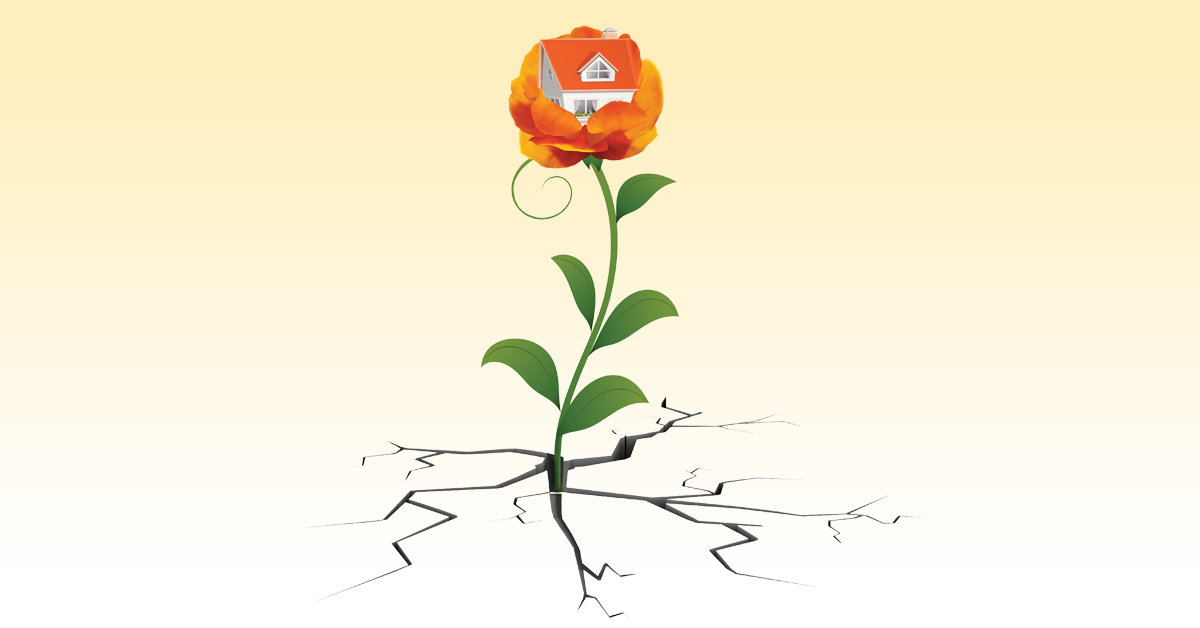The American dream of homeownership is still alive and well, but for too many Americans, that dream has moved further and further out of reach. Despite historically low interest rates, millions of consumers are having difficulty getting their foot in the door, due to rising home prices, high rents and lackluster wage increases.
Saving up for a downpayment is by far the biggest obstacle to buying a home. And that obstacle is only growing bigger, especially with so many millennials wrestling with student-loan debt. But there is a way to prevent these dreams from shriveling and dying.
These consumers can benefit from many types of downpayment assistance (DPA) programs that are available. Studies show that, when provided to creditworthy individuals, these programs are not only helping people build wealth through homeownership, they also are creating stronger communities.
Yet there are many misconceptions about downpayment assistance programs that are keeping more Americans from fully realizing their benefits. More than ever, it’s important to understand exactly how and why these programs exist, and how lenders and mortgage originators can take advantage of these programs to help clients overcome the biggest barrier to homeownership.
Downpayment barrier
For most younger and low- to medium-income Americans, coming up with enough money for a downpayment is a huge struggle. In fact, according to a 2017 survey of 10,000 adults conducted by Zillow, two-thirds of people who were renting said their biggest hurdle to buying a home was saving for a downpayment.
Making a downpayment on a home is especially difficult if a potential homeowner does not have family members who are willing or able to contribute funds. This is particularly true for minorities. According to 2016 Federal Reserve data, African American and Hispanic families had about one-tenth and one-eighth of the wealth of white families, respectively.
Downpayment assistance programs were created to help level this playing field. And they work, too. In 2016, RealtyTrac released a study which found that borrowers who utilized these programs on a 30-year fixed-rate loan saved an average of $17,766 over the life of their mortgage compared to borrowers who did not use DPA and made a 3% downpayment. That figure included a savings of $5,965 during the loan closing.
According to the Joint Center for Housing Studies of Harvard University, there are more than 2,500 privately sponsored and government-funded downpayment assistance programs in the U.S. that can reduce a borrower’s downpayment or upfront costs. Roughly 43% of first-time homebuyers through the Federal Housing Administration relied on some form of downpayment assistance, the center found.
Downpayment assistance programs, however, have recently come under scrutiny. One reason for this can be traced to the 2008 housing crisis, when many buyers received downpayment help in the form of a credit from home sellers. Through such programs, home sellers would pay the buyer’s downpayment and, in exchange, the buyer would agree to a higher sale price.
This type of assistance was found to be a major factor behind inflated home prices and failed loans, and such programs have since been shut out of the market. Still, some stakeholders believe that loan programs that allow governmental entities to provide downpayment assistance perform poorly when compared to loans in which downpayments came from a relative. But that is simply not true.
According to a paper authored by researchers at Harvard’s Joint Center for Housing Studies, government downpayment assistance programs were not found to have a significant impact on default risk. The researchers also found that government DPA programs benefited minority borrowers in particular. For example, African American borrowers were more likely than white borrowers to receive downpayment help through a second mortgage, or through a government program or community grant.
Myths and realities
Still, myths about downpayment assistance programs abound. For example, more than one-third of people surveyed by The Urban Institute in 2018 believed they needed a downpayment of at least 20% of to get a mortgage. The reality, The Urban Institute found, is that six out of 10 buyers made downpayments of 6% or less of the home price.
Others believe government downpayment programs are only for first-time buyers, but there are many programs available for borrowers who have owned a home as recently as three years ago. Yet another falsehood is that a borrower cannot accept contributions toward a downpayment from family or friends, but many lenders allow gifts, grants or loans for a downpayment.
Many borrowers also believe that it’s difficult to qualify for downpayment assistance. The truth is, there are programs available to buyers with all levels of credit scores and income. In some programs, for example, downpayment assistance is available in the form of a second loan that is paid down along with the first mortgage. Other forms of assistance include loans with deferred payments, which are paid when the borrower moves or refinances their mortgage. Still other programs allow DPA loans to be forgiven after a set number of years or are provided through grants that never have to be repaid.
This past October, CBC Mortgage Agency released a national DPA study that shed more light on this issue. For example, the company found that more than nine out of 10 homebuyers would not have been able to buy a home without some form of help with their downpayment. The study also found that downpayment assistance programs played a valuable role in qualifying borrowers who carried significant student-loan debt and were having difficulty saving up for a downpayment.
From these findings, it became clear that the absence of downpayment assistance would shut millions of deserving Americans out of the homebuying market. In addition, the study found that buyers who benefited from downpayment assistance programs reported feeling a sense of accomplishment, well-being or security by owning a home.
• • •
For decades, downpayment assistance programs have helped creditworthy buyers achieve homeownership. Without such programs, millions of potential homeowners would not have this important tool to help them clear the most significant barrier to homeownership.
To ensure these programs continue to exist for current and future generations of homebuyers, there needs be more education about DPA programs, as well as a stronger commitment from the mortgage industry, individual lenders and mortgage professionals. Mortgage originators and lenders need to take a leading role helping their clients understand how to benefit from these programs. With that kind of support, the American dream of homeownership can be kept alive for those who deserve it most.
Author
-
Richard Ferguson is president of CBC Mortgage Agency, a nationally chartered housing-finance agency and a leading source of downpayment assistance. The company is committed to creating affordable- and sustainable-housing solutions to underserved communities, particularly minorities and millennials, who have good credit and good income but lack the funds for a downpayment. Since 2013, CBC Mortgage Agency has helped more than 18,000 low income consumers achieve the dream of homeownership.
View all posts






